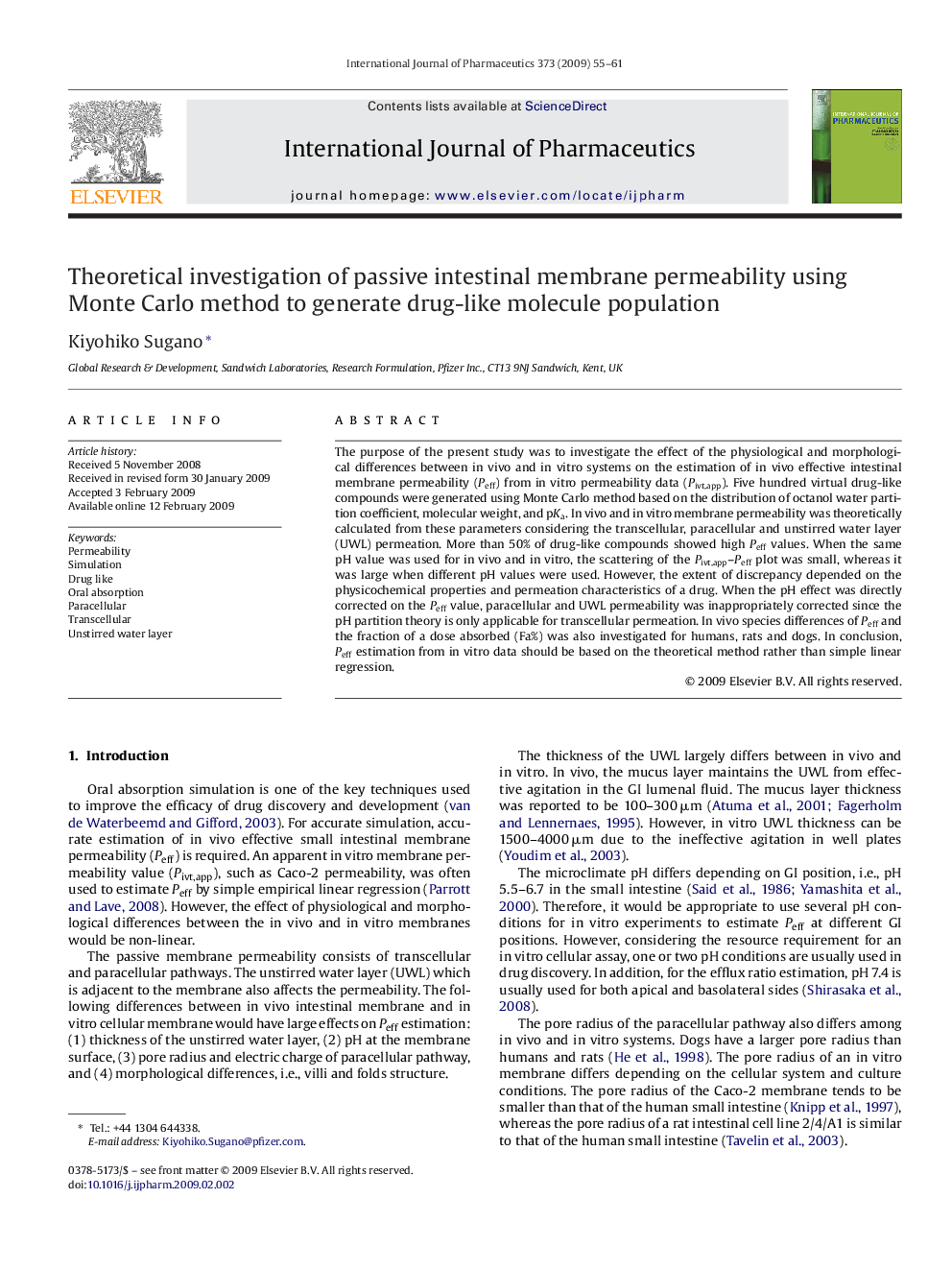| Article ID | Journal | Published Year | Pages | File Type |
|---|---|---|---|---|
| 2504878 | International Journal of Pharmaceutics | 2009 | 7 Pages |
The purpose of the present study was to investigate the effect of the physiological and morphological differences between in vivo and in vitro systems on the estimation of in vivo effective intestinal membrane permeability (Peff) from in vitro permeability data (Pivt,app). Five hundred virtual drug-like compounds were generated using Monte Carlo method based on the distribution of octanol water partition coefficient, molecular weight, and pKa. In vivo and in vitro membrane permeability was theoretically calculated from these parameters considering the transcellular, paracellular and unstirred water layer (UWL) permeation. More than 50% of drug-like compounds showed high Peff values. When the same pH value was used for in vivo and in vitro, the scattering of the Pivt,app–Peff plot was small, whereas it was large when different pH values were used. However, the extent of discrepancy depended on the physicochemical properties and permeation characteristics of a drug. When the pH effect was directly corrected on the Peff value, paracellular and UWL permeability was inappropriately corrected since the pH partition theory is only applicable for transcellular permeation. In vivo species differences of Peff and the fraction of a dose absorbed (Fa%) was also investigated for humans, rats and dogs. In conclusion, Peff estimation from in vitro data should be based on the theoretical method rather than simple linear regression.
